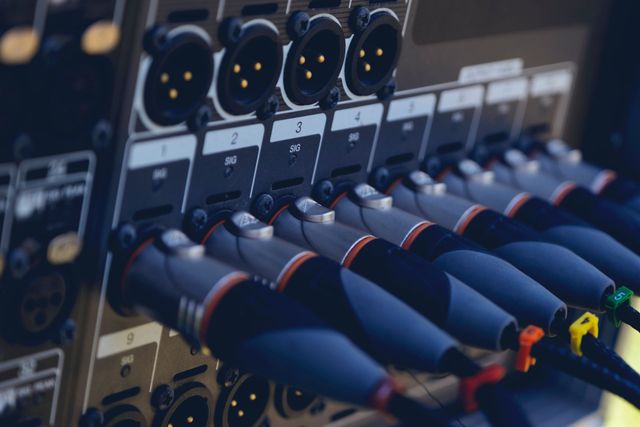Mastering the Fundamentals of Signal Transmission in Audiovisual Equipment for Optimal Output
Wiki Article
To comprehend how audiovisual equipment works, it’s crucial to understand the concept of signal. The signal flow refers to the path that sound and visual transmissions take from their origin to their destination. This journey begins with input devices such as microphones and cameras, which capture sound and visuals. Grasping this process is crucial for anyone who wants to ensure maximum functionality during events, concerts, or any event that depends on AV systems.

The initial step in signal flow involves input devices that gather information. For example, a microphone converts audio waves into electric signals. Similarly, a camera transforms illumination into video data. These devices function as the starting point for every audiovisual setup. Once the data are captured, they must be sent to a mixing console or a control system that assists to manage the multiple inputs. This component is responsible for modifying levels, incorporating effects, and making sure that the signals are clean and distortion-free before they move on to the subsequent stage.
After the mixer, the data must be sent to power amplifiers and processors. Power amplifiers increase the intensity of sound signals, rendering them louder and stronger. On the other hand, visual processing units enhance the quality of the image information. These components are crucial for maintaining the quality of the signals as they move through the system. Proper boosting and tuning ensure that both sound and video results are of top quality, which is critical for audience engagement and total experience.
The subsequent stage in signal is the output stage stage, where the enhanced signals are delivered to output devices, such as speakers and projectors. Speakers change electrical signals back into audio, enabling the audience to perceive the sound clearly. Visual projectors show visual data on a surface, additional info making it available to everyone in the venue. The manner these output are set up can greatly affect the overall functionality of the AV setup. For example, the positioning of sound systems can affect how audio travels through a room, affecting how well the audience perceives the sound.
Ultimately, overseeing the signal flow is crucial to ensure everything operates seamlessly during an occasion. AV professionals often use oversight equipment to check levels and make changes find this in real time. This supervision helps to identify and fix potential problems that may occur, such as feedback in sound or degradation in video. By mastering the essentials of signal flow, AV technicians can guarantee that every event operates smoothly, delivering a high-quality experience for everyone participating. Grasping this process not only enhances technical abilities but also cultivates a greater appreciation for the complex systems that create audiovisual encounters possible.